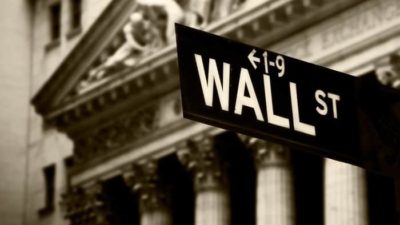As another ASX reporting season unfolds, investors and financial analysts alike will spend the next several weeks keenly focused on dissecting company balance sheets to gauge the financial health and performance of ASX companies.
We'll see plenty of talk of cash balances and growth margins, and acronyms such as P/E, NPAT and EBIDTA will be implanted on our brains by August's end. But there's another section of the balance sheet that is often overlooked, but equally essential for interpreting a company's financial position and long-term viability.
Anyone reading this will assume, as a given, that all of the company research we publish here at The Motley Fool has a fair degree of analysis applied.
When examining the worthiness of, say, a dividend payer, it'd make good sense to consider the balance sheet: cash balances, working capital, short-term and long-term debt, for instance.
[I might add, balance sheet analysis can be good for any company, not just those that pay dividends.]
When it comes to smaller-cap companies, we'd obviously look at the cash balance and then compare this to its actual cash flow. Is there enough cash coming in to fund its operations and will it avoid future capital raisings? Or, will another injection of capital be required?
Leading on from this, we consider other matters such as earnings growth, gross margins, and expense growth.
These are all very good metrics to study and if you read through our research, you should see plenty of evidence that this is what our analysts are looking at, and commenting upon.
But there's one other element of equities analysis that, I think, is rarely touched upon; the equity section of the balance sheet itself.
"Equity", as opposed to 'equities', represents the difference between a company's assets and its liabilities. It can also represent the amount of money that would be returned to a company's shareholders if all of the assets were liquidated. It's also commonly referred to as "Book Value" or "shareholders' equity", so in case you see these terms being mentioned in your readings on share investment, you should know these are basically referring to the same thing.
Let's take a look at one such example, from the ARB Corporation (ASX: ARB) balance sheet as at 31 December 2023.

Source: ARB 1HFY24 Financial Statements
The increase in equity you see here is not just explained by the difference between assets and liabilities. This section of the balance sheet also shows how that equity has increased.
In the example above, some of this has come from contributed equity which could have been due a dividend reinvestment plan or the exercise of options, or both. The increase in this example, though, probably didn't come about due to a capital raising given the increase looks rather modest.
Reserves are usually a deliberate decision by the Board to account for some future liability and, typically, shouldn't increase too much.
Retained earnings — the difference between earnings and the dividend paid — is usually a big driver for the increase in equity. As you can see, earnings have added a great deal to the equity balance since the last balance sheet date on 30 June 2023 and, indeed, throughout ARB's history as a listed company. So, it's something I like to see when studying a company's balance sheet.
Equity is important because, when a person (or institution) buys shares, they're actually acquiring a fractional ownership interest in that company's equity.
If earnings and margin performance are good, or improving, then this will have a flow-on effect to the company's equity which, ideally, will be increasing over time.
Of course, if the opposite is true, and the company's prospects and finances are deteriorating then equity can actually reduce, lowering the value of the company.
I like to actually study a company's history over a number of years, with five to ten years being a reasonable period to observe trends.
ARB, in this regard, is an excellent example of a company that has grown its equity and, hence, its net worth over time.
Fortunately, for ARB shareholders, the vast bulk of growth in equity has come from retained earnings and not additional capital. For some companies, where equity needs to be raised on a regular basis, you'd see the contributed equity figure rise by a lot.
This isn't necessarily something we want to see. Anyone can place more money in a company's bank account and instantly make it more valuable. Yes, it would be, but it's an artificial boost without the underlying performance of the company also making a contribution.
Growing equity is a sign of a successful business but it's preferable to see equity growing through an increase in retained earnings and/or an improvement in the value of assets versus its liabilities. The continued raising of capital could signify a poor business that leans too much on its investors.
Let's take a look at another example.
Integral Diagnostics (ASX: IDX) recently released its half year results for FY24 and, unfortunately, it was required to write down the value of its New Zealand business due to a poorer business environment confronting the company in that market.
Write-downs, or impairments, are a non-cash item so there isn't necessarily any effect on its cash flows for that particular period.
But just take a look at what happened to its equity balance in the six months to the end of December 2023.

Source: Integral Diagnostics 1HFY24 Financial Statements
Contributed equity and reserves didn't really have much of an impact in this half, but retained earnings (profits) certainly did.
Here the company's retained earnings have fallen to a negative number which has an adverse effect on the amount of equity on its balance sheet.
It's not a great situation to see and, ideally, we'd like to see an improvement in its operational performance in the next 6-18 months. If this were to occur then it's likely an improved profit position — and in the absence of any further impairments — would see its retained profits return to a positive number.
Given the disparity between the two companies' performance, it's not surprising to see that the multiple of equity the market is willing to pay for shares in ARB is significantly higher than the multiple paid for Integral Diagnostics.
The market capitalisation of ARB is worth approximately $3.32 billion, which is 5.22 times its equity. Integral Diagnostics, on the other hand, has a market capitalisation of $522 million, or 1.74 times equity.
You can see here, the reason why evaluating shares is tricky. ARB is the better performer, but it costs more. Integral Diagnostics comes with a lower price tag, but it's been a disappointing investment for shareholders over the last few years.
Foolish Takeaway
When you're considering investments in listed companies, continue by all means to consider revenue and expense growth, earnings per share, margin performance, cash flow and the amount of debt on the balance sheet (if any).
Studying businesses and their financial statements holistically will give you a better understanding of how they operate and, importantly, whether it's able to grow its net worth for individual shareholders.
Therefore, when evaluating the merits of a company and its shares, do remember to take a look at the bottom of the balance sheet, in addition to all of the other traditional measures mentioned above.
Then, judge for yourself if you're satisfied that your company is actually increasing its equity and, hence, its ability to provide you with a growing asset in the years ahead.
When combined with other factors, equity gives an idea of the value, or the performance direction, of a company.
Unfortunately, shareholder equity is but one piece in the investment 'puzzle' that I think many investors typically don't pay as much attention to as they should.
When you're satisfied you've found a company with growing equity — and a growing top and bottom line — you may well have found yourself a good candidate for your investment portfolio, even if the price is a little steeper compared to others.






